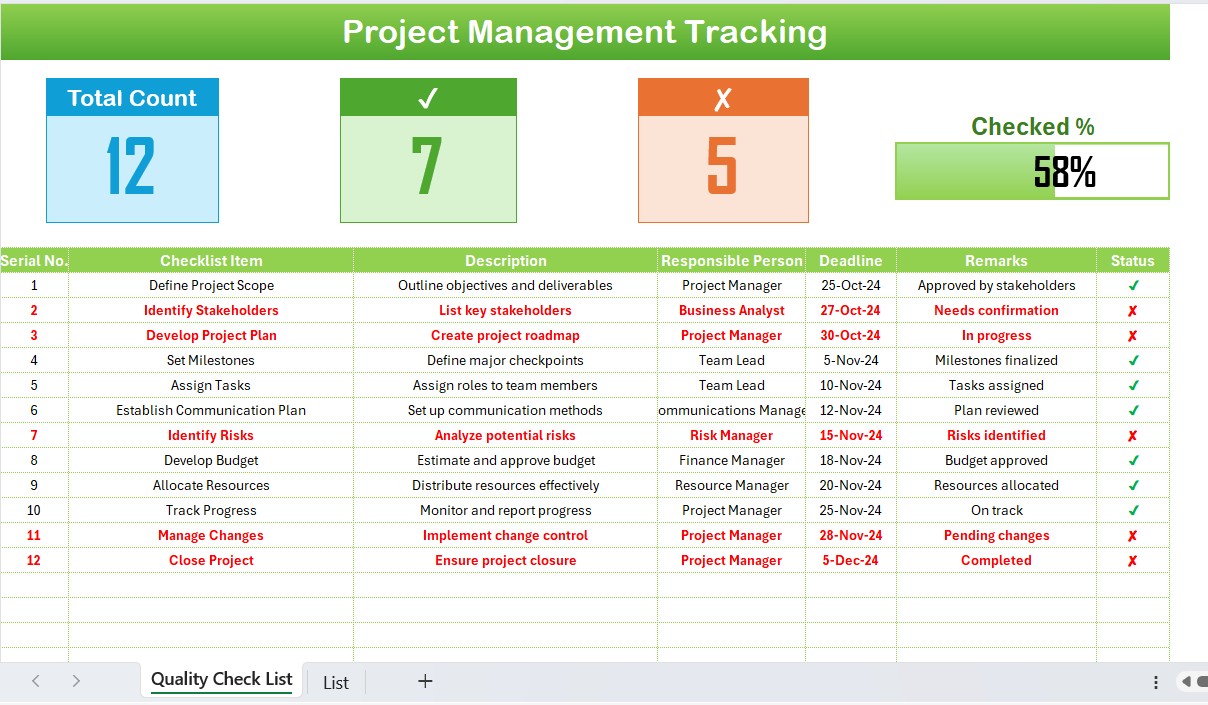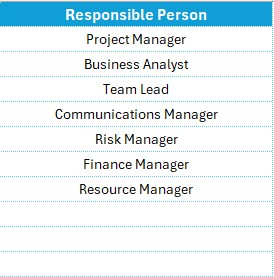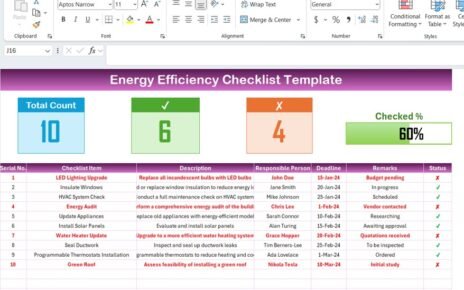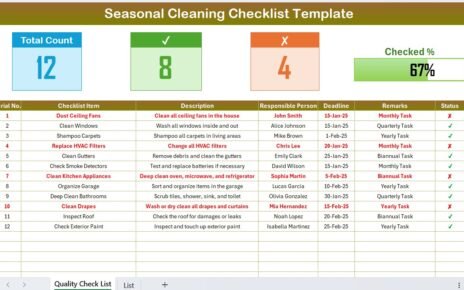Managing a project efficiently requires detailed planning, tracking, and execution. Excel is one of the most widely used tools for project management tracking because of its versatility and ease of use. This article provides a comprehensive guide on how to track project management tasks in Excel using a ready-to-use template.
Click to Project Management
Why Use Excel for Project Management Tracking?
Excel provides an easy way to track project progress, deadlines, responsible persons, and statuses. Below are some key advantages of using Excel for project tracking:
Advantages of Project Management Tracking in Excel
- User-Friendly: No need for advanced software or tools.
- Customizable: Modify the template as per your project requirements.
- Cost-Effective: No additional cost for premium software.
- Data Analysis: Easy to filter, sort, and analyze project data.
- Integration: Can integrate with other tools like Power BI, Google Sheets, and more.
Key Features of the Project Management Tracking Template
This Project Management Tracking Template in Excel is a ready-to-use checklist that helps in managing projects efficiently. It consists of two worksheets:
Project Management Checklist Sheet Tab

This is the main worksheet where the checklist information is captured.
Top Section
- At the top of this sheet, we have three key metrics that provide a quick overview of project progress:
- Total Tasks Count
- Checked Count (Completed tasks)
- Crossed Count (Pending/In-Progress tasks)
- Progress Bar indicating the percentage of completed tasks
Click to Project Management
List Sheet Tab

This sheet captures the unique list of responsible persons, which is used to create a drop-down list in the main table. This ensures consistency while assigning tasks and reduces errors.
How to Use the Project Management Tracking Template?
- Download the Template: Open Excel and load the template.
- Enter Project Details: Update project-related information in the Checklist Table.
- Assign Responsibilities: Select a responsible person from the drop-down list.
- Set Deadlines: Define due dates for each task.
- Update Status: Mark tasks as ✔ (completed) or ✘ (pending).
- Monitor Progress: Use the Progress Bar and counts to track completion percentage.
Best Practices for Project Management Tracking in Excel
- Keep It Simple: Avoid unnecessary columns or complex formulas.
- Use Conditional Formatting: Highlight overdue tasks in red for better visibility.
- Utilize Drop-Down Lists: Ensure uniform data entry for responsible persons.
- Regular Updates: Update the status regularly to keep information accurate.
- Backup Your Data: Store a copy of your file to prevent data loss.
Click to Project Management
Common Challenges and How to Overcome Them
- Data Overload → Filter tasks based on priority.
- Manual Errors → Use validation rules and dropdown lists.
- Lack of Collaboration → Share the file via cloud storage (Google Drive, OneDrive, etc.).
Conclusion
Project management tracking in Excel is an effective and efficient method to monitor progress, assign tasks, and ensure smooth execution. Using a structured template helps in reducing errors and improving productivity. By following best practices and updating data regularly, you can keep your projects on track.
Frequently Asked Questions (FAQs)
Can I use this template for multiple projects?
Yes! You can create separate sheets for different projects or use a single sheet with a project filter.
How can I track overdue tasks?
Use conditional formatting to highlight overdue tasks in red for easy identification.
Can I integrate this template with other tools?
Yes! You can integrate it with Google Sheets, Power BI, or Zapier for automation.
How do I assign tasks to multiple people?
You can add a column for additional responsible persons or use comments in Excel.
Is there a way to get automatic alerts for deadlines?
Yes! You can use Excel VBA or set up reminders in Google Sheets or Outlook.
Click to Project Management
Visit our YouTube channel to learn step-by-step video tutorials



